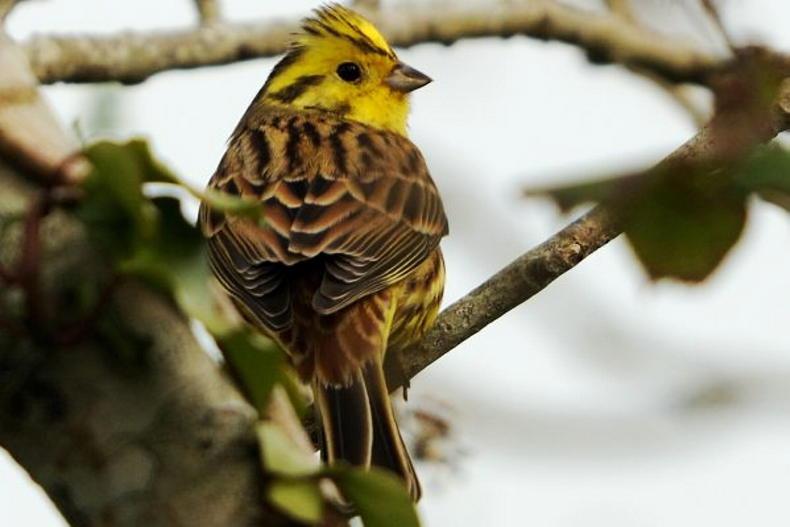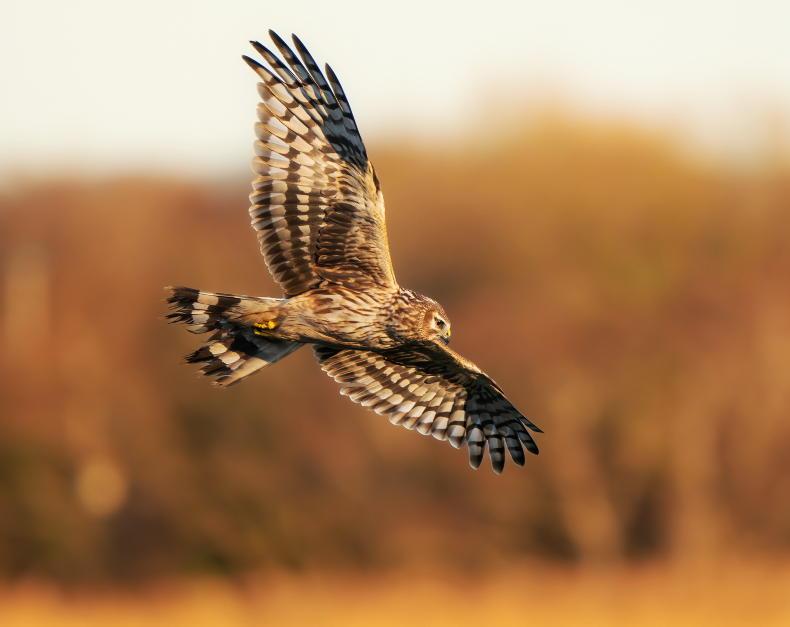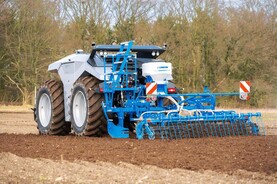Such is the complexity of balancing priorities for biodiversity enhancement, water quality and reducing greenhouse gas (GHG) emissions within farming systems, that attempting to deliver benefits in one area can exacerbate the problems in another.
The need for a holistic approach to agricultural and land use policy, which considers these priorities in combination rather than in isolation, is evidenced from the recent changes to the Nitrates Action Programme.
Since 2022, under the Nitrates Action Programme, tillage farmers have been required to shallow cultivate 75% to 80% of their post-harvest soils, known as winter stubbles.
This shallow cultivation measure is designed to reduce pollution and improve water quality. However, this is likely to be achieved to the detriment of farmland biodiversity.
Winter stubbles are the remnants of cereal crops after the harvest in autumn, a large majority of which are traditionally left fallow throughout the winter until the field is ploughed and a new crop is sown in early spring.
The Nitrates Directive now requires that winter stubbles are shallow cultivated within 14 days after harvest on tillage farms, across 14 counties, where only 20% to 25% of winter stubbles will be retained.
Shallow cultivation or ‘tickling the soil surface’ is designed to establish green cover as soon as possible after the harvest, in order to absorb nitrogen that may otherwise be lost from the soil and cause pollution to nearby waterways and groundwater.
Over-winter stubble importance
The leftover seeds in winter stubble, which are now encouraged to be germinated to provide that green cover, have long served another unintended but well-known purpose. Along with spilt grain and insects associated with winter stubbles, the seeds left behind after harvest are an important food source for a range of farmland birds during the lean winter months. Shallow cultivation has resulted in the significant loss of winter stubbles and likely the food source the stubbles would have provided.
A recent study in south Cork showed that ‘winter stubbles’ was the most important field type for winter farmland birds, especially so for wintering farmland birds of conservation concern, including the skylark, linnet and yellowhammer. The consequences of the widespread loss of winter stubbles in the landscape for farmland birds is not yet fully understood, but despite this, these consequences are already unfolding.
We do have some insights on the likely effects of the loss of winter stubbles on farmland birds from our recent past. Winter stubbles as a land use have been in decline over recent decades, albeit at a much slower rate than has occurred over the past two winters.
Tillage is the most common agricultural land use type in Ireland after grassland, although it covers a significantly smaller area, occupying just 7% of agricultural land. Grassland-orientated production has steadily increased over the past 50 years and is now the dominant land use, with 90% of the agricultural land in Ireland devoted to pasture, meadow and silage.
The effects of this homogenisation and associated land use changes can be clearly observed in farmland bird populations and particularly species which are closely associated with tillage.
Increase in endangered birds
Between 1998 and 2021, there has been a 45% increase in the number of farmland birds on the Red List of Birds of Conservation Concern in Ireland; most of these species were common and widespread once.
The decline and subsequent extinction of the Corn Bunting in Ireland is attributed to the loss of winter stubble and the use of pesticides, which reduced the availability of invertebrate and seed food.

The Yellowhammer has been endangered for some time. \ John Fox
The breeding range of the yellowhammer has contracted significantly, which has followed the loss of tillage throughout much of the country. Winter stubbles are also thought to be an important foraging habitat for predatory birds, including the barn owl, long-eared owl, kestrel and hen harrier.
Although there remain knowledge gaps in the importance of winter stubbles for farmland birds and biodiversity in the Irish context, the information that is available shows that this is a valuable habitat and that further reduction in stubbles will negatively impact a range of farmland birds, many of which are under severe pressure, and are red and amber-listed Birds of Conservation Concern in Ireland.
An ‘easy win’ for biodiversity
There has been significant effort invested in creating and enhancing habitats to benefit biodiversity on farms through successive iterations of agri-environment schemes. The majority of these habitats are created and managed solely for biodiversity, and are ‘non-productive lands’ in the farming sense, such as winter bird food.
It is rare that habitats are created during the course of routine farming practices on ‘productive lands’, which can also provide widescale biodiversity benefits, particularly on intensively managed farms, however, winter stubble falls firmly within this category.

Hen Harrier. \ David Leckie
As such, winter stubbles requires no additional work on the farmers’ part, but still delivers benefits for birds and other wildlife.
Unfortunately, the measures taken to date through agri-environment schemes have not been enough to reverse the declines in many of our farmland birds, and a lot more effort is needed if we are to achieve this.
It stands to reason, therefore, that we should not be losing existing important habitats for farmland birds, especially those in the ‘productive’ farming cycle, which require no additional work to provide and manage. And yet, this is what is currently happening with winter stubbles.
Cart before the horse
Research led by Teagasc has been initiated to understand the effects of the shallow cultivation measure and resulting loss of winter stubbles on farmland birds.
This research is welcomed and needed.
However, it should be the case that the findings of this research inform decisions regarding the appropriate measures to improve water quality and to protect biodiversity rather than the other way around.
The horse has well and truly bolted before shutting the stable door has even been considered, as stubble cultivation rules were introduced with no impact assessment.
Farmland birds will suffer the immediate consequences, as will farmers who will predictably be under increased pressure to undo some of the damage further down the line.
Such is the complexity of balancing priorities for biodiversity enhancement, water quality and reducing greenhouse gas (GHG) emissions within farming systems, that attempting to deliver benefits in one area can exacerbate the problems in another.
The need for a holistic approach to agricultural and land use policy, which considers these priorities in combination rather than in isolation, is evidenced from the recent changes to the Nitrates Action Programme.
Since 2022, under the Nitrates Action Programme, tillage farmers have been required to shallow cultivate 75% to 80% of their post-harvest soils, known as winter stubbles.
This shallow cultivation measure is designed to reduce pollution and improve water quality. However, this is likely to be achieved to the detriment of farmland biodiversity.
Winter stubbles are the remnants of cereal crops after the harvest in autumn, a large majority of which are traditionally left fallow throughout the winter until the field is ploughed and a new crop is sown in early spring.
The Nitrates Directive now requires that winter stubbles are shallow cultivated within 14 days after harvest on tillage farms, across 14 counties, where only 20% to 25% of winter stubbles will be retained.
Shallow cultivation or ‘tickling the soil surface’ is designed to establish green cover as soon as possible after the harvest, in order to absorb nitrogen that may otherwise be lost from the soil and cause pollution to nearby waterways and groundwater.
Over-winter stubble importance
The leftover seeds in winter stubble, which are now encouraged to be germinated to provide that green cover, have long served another unintended but well-known purpose. Along with spilt grain and insects associated with winter stubbles, the seeds left behind after harvest are an important food source for a range of farmland birds during the lean winter months. Shallow cultivation has resulted in the significant loss of winter stubbles and likely the food source the stubbles would have provided.
A recent study in south Cork showed that ‘winter stubbles’ was the most important field type for winter farmland birds, especially so for wintering farmland birds of conservation concern, including the skylark, linnet and yellowhammer. The consequences of the widespread loss of winter stubbles in the landscape for farmland birds is not yet fully understood, but despite this, these consequences are already unfolding.
We do have some insights on the likely effects of the loss of winter stubbles on farmland birds from our recent past. Winter stubbles as a land use have been in decline over recent decades, albeit at a much slower rate than has occurred over the past two winters.
Tillage is the most common agricultural land use type in Ireland after grassland, although it covers a significantly smaller area, occupying just 7% of agricultural land. Grassland-orientated production has steadily increased over the past 50 years and is now the dominant land use, with 90% of the agricultural land in Ireland devoted to pasture, meadow and silage.
The effects of this homogenisation and associated land use changes can be clearly observed in farmland bird populations and particularly species which are closely associated with tillage.
Increase in endangered birds
Between 1998 and 2021, there has been a 45% increase in the number of farmland birds on the Red List of Birds of Conservation Concern in Ireland; most of these species were common and widespread once.
The decline and subsequent extinction of the Corn Bunting in Ireland is attributed to the loss of winter stubble and the use of pesticides, which reduced the availability of invertebrate and seed food.

The Yellowhammer has been endangered for some time. \ John Fox
The breeding range of the yellowhammer has contracted significantly, which has followed the loss of tillage throughout much of the country. Winter stubbles are also thought to be an important foraging habitat for predatory birds, including the barn owl, long-eared owl, kestrel and hen harrier.
Although there remain knowledge gaps in the importance of winter stubbles for farmland birds and biodiversity in the Irish context, the information that is available shows that this is a valuable habitat and that further reduction in stubbles will negatively impact a range of farmland birds, many of which are under severe pressure, and are red and amber-listed Birds of Conservation Concern in Ireland.
An ‘easy win’ for biodiversity
There has been significant effort invested in creating and enhancing habitats to benefit biodiversity on farms through successive iterations of agri-environment schemes. The majority of these habitats are created and managed solely for biodiversity, and are ‘non-productive lands’ in the farming sense, such as winter bird food.
It is rare that habitats are created during the course of routine farming practices on ‘productive lands’, which can also provide widescale biodiversity benefits, particularly on intensively managed farms, however, winter stubble falls firmly within this category.

Hen Harrier. \ David Leckie
As such, winter stubbles requires no additional work on the farmers’ part, but still delivers benefits for birds and other wildlife.
Unfortunately, the measures taken to date through agri-environment schemes have not been enough to reverse the declines in many of our farmland birds, and a lot more effort is needed if we are to achieve this.
It stands to reason, therefore, that we should not be losing existing important habitats for farmland birds, especially those in the ‘productive’ farming cycle, which require no additional work to provide and manage. And yet, this is what is currently happening with winter stubbles.
Cart before the horse
Research led by Teagasc has been initiated to understand the effects of the shallow cultivation measure and resulting loss of winter stubbles on farmland birds.
This research is welcomed and needed.
However, it should be the case that the findings of this research inform decisions regarding the appropriate measures to improve water quality and to protect biodiversity rather than the other way around.
The horse has well and truly bolted before shutting the stable door has even been considered, as stubble cultivation rules were introduced with no impact assessment.
Farmland birds will suffer the immediate consequences, as will farmers who will predictably be under increased pressure to undo some of the damage further down the line.








 This is a subscriber-only article
This is a subscriber-only article











SHARING OPTIONS: